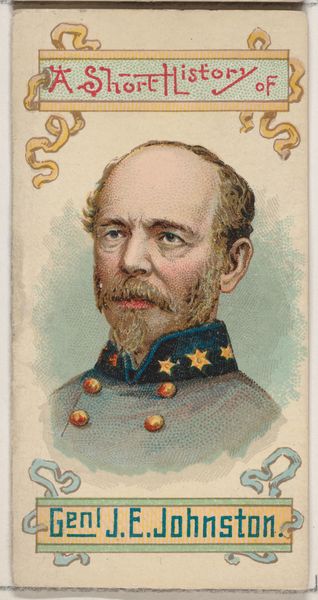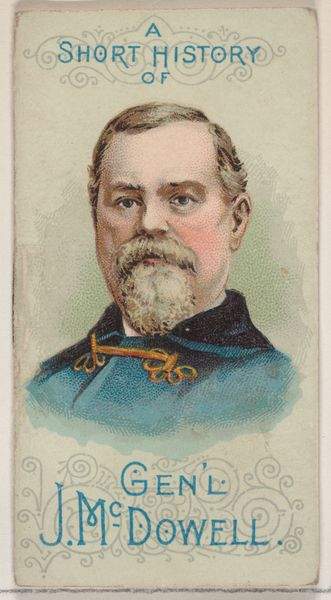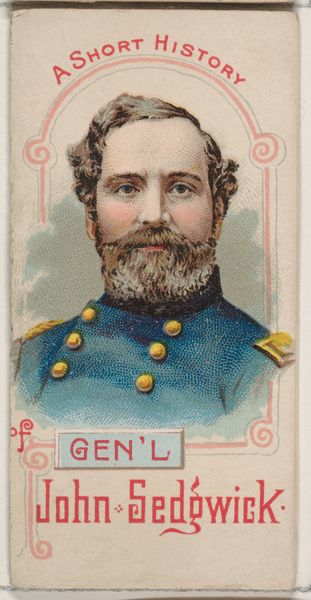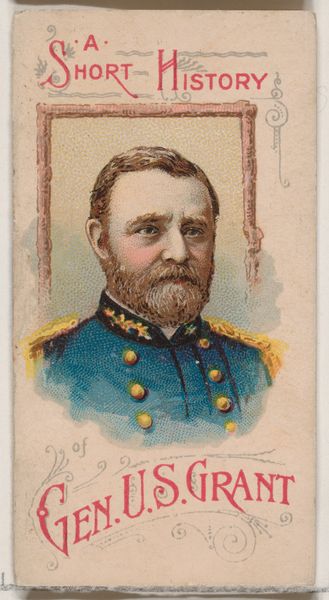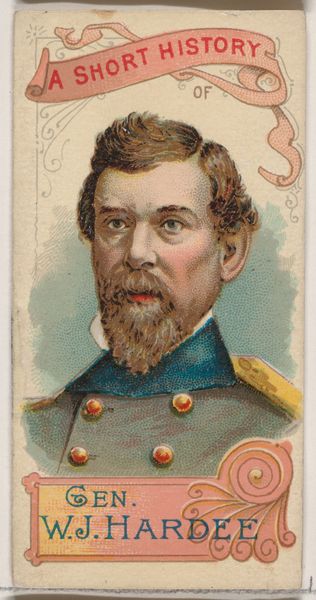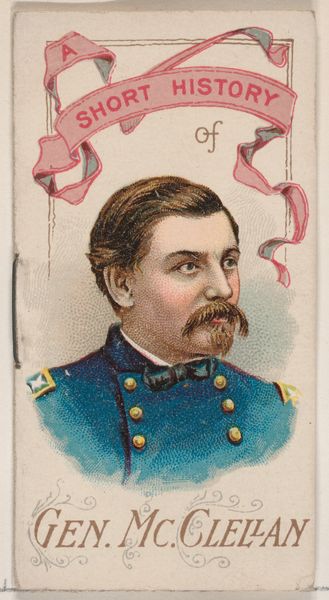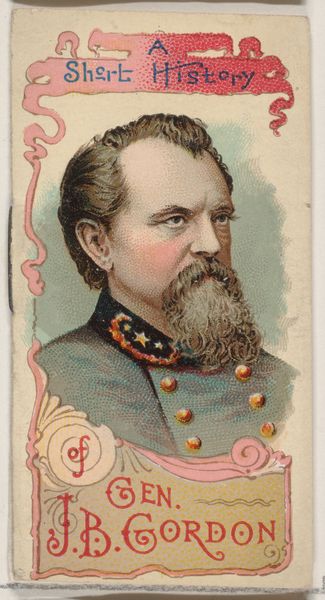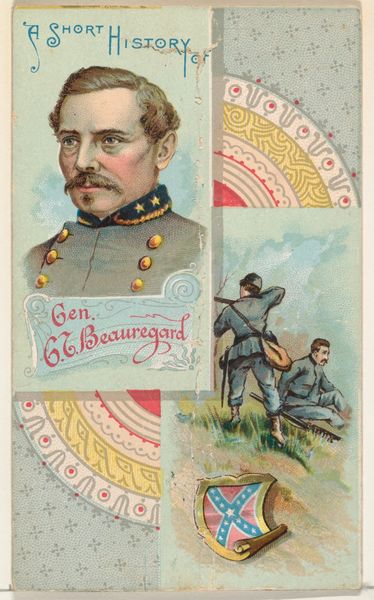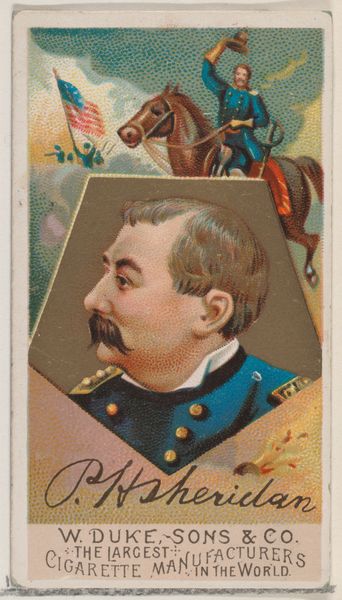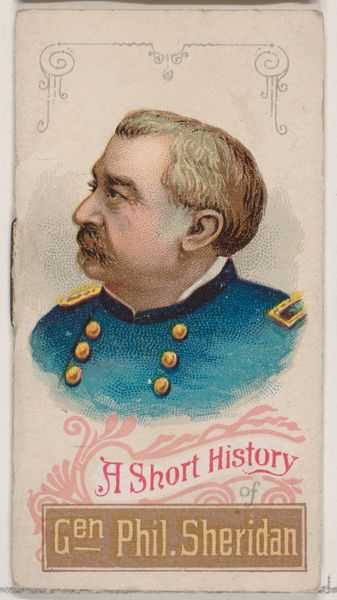
A Short History of General Pierre Gustave Toutant Beauregard, from the Histories of Generals series of booklets (N78) for Duke brand cigarettes 1888
0:00
0:00
drawing, coloured-pencil, print
#
portrait
#
drawing
#
coloured-pencil
# print
#
coloured pencil
Dimensions: Overall (Booklet closed): 2 3/4 × 1 1/2 in. (7 × 3.8 cm) Overall (Booklet open): 2 3/4 × 2 7/8 in. (7 × 7.3 cm)
Copyright: Public Domain
Curator: So, what do you think? I'm looking at this "Short History of General Pierre Gustave Toutant Beauregard" booklet. It’s part of the "Histories of Generals" series from 1888, created by W. Duke, Sons & Co. for Duke brand cigarettes. Editor: It has a certain…softness to it? The colors are muted, almost faded. There’s an undeniable romanticized view of the General here, a stark contrast considering he fought for the Confederacy. Curator: Precisely. Let's dig into the context. These booklets were essentially marketing tools. Consider the cigarette cards themselves – mass-produced using color pencils, and designed to be collected. It’s fascinating how this piece exists at the intersection of manufacturing, advertising, and…well, historical revisionism. Editor: Right, these types of portrait cards romanticized war and celebrated the figures without acknowledging the historical weight or implications of the Confederacy's actions and their relationship with slavery and systematic racism. How complicit were these products in promoting such imagery and how should we address this in relation to present issues of inequality and identity? Curator: It prompts important questions about complicity, doesn’t it? These small portraits became instruments of cultural reinforcement, propagating narratives under the guise of harmless collectables. The way they were printed in multiples also made them highly accessible. The technique – the coloured pencil, the printing process – served a precise economic function, normalizing certain perspectives through widespread distribution. Editor: And it worked. They normalized it. We should not shy away from the disturbing social dimensions behind these beautifully crafted, seemingly innocent objects. After all, understanding their role in shaping public sentiment provides context for recognizing the long shadows of historical injustices, which still exist today. Curator: Absolutely. The materiality, the printing processes, and the mass dissemination become critical to unraveling how popular culture contributed to shaping a narrative and erasing historical wrongdoings. This object makes one reflect about current forms of promotional art and messaging. Editor: A little memento can hold a heavy historical burden. These tiny collectibles can open a larger and necessary discussion about the legacies we're still grappling with.
Comments
No comments
Be the first to comment and join the conversation on the ultimate creative platform.
